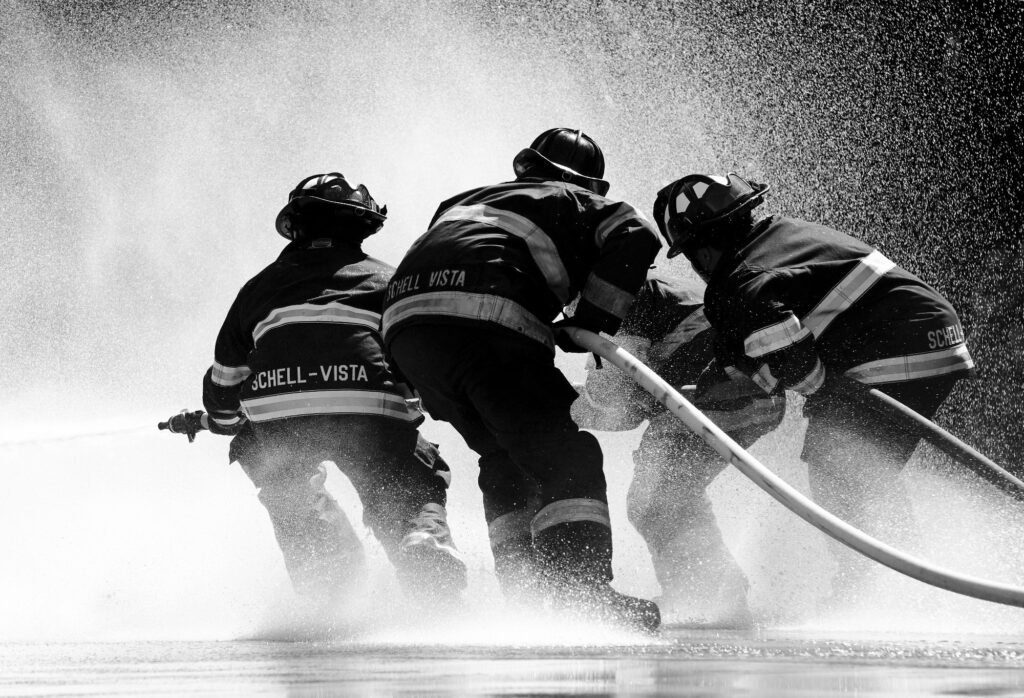Training With A Twist

By far the most important part of being a firefighter is knowing how to do your job. The only way we get there is by training. From the probie to the senior man, everybody must brush up on their skills. How do you train? Do you mulch over the same drill every week? Or do you switch it up and spice things up a bit? We’ll talk about ways to keep your crew excited to train and how we can enhance their skills.
During training, we’re often told the way things are supposed to be done, but sometimes we miss out on the “why” part of it. Both are equally important to know. A firefighter may know “how” to cut a hole in a roof, but the biggest thing about that task is knowing why that’s effective and when it’s the right time to make the cut. Failure to understand the reason for a task can have tragic results on the fireground.
If you’re doing the same mundane drills each week, you’ll quickly lose the attention of your crew. A lack of attention creates a loss of appetite for knowledge and that will definitely hurt your organization in the long run. The same goes for drills that are physically exhausting. Although needed, long, exerting drills will take a toll on your firefighters if they are done close to one another. Spread those drills apart so you’re not wasting your energy for when a real job comes through.
We covered boring drills and heavy drills. What can we do to keep our crews motivated and absorb knowledge if we take those two options out of the equation? Think of what the members enjoy in their downtime. Maybe it’s trivia or playing competitive games to pass the time. These are things that an officer needs to observe and figure out how to incorporate into a training. I’ll give a few examples of what I’ve done with my company of firefighters.
Cribbing Jenga. It’s not a new concept and it’s been done by plenty of fire departments. Some people may think it’s lame and that it has nothing to do with real life situations, but in fact it does. Cribbing Jenga is played by stacking cribbing like a jenga game and then using heavy rescue tools to play the game of jenga. Why this works as a method of training is for a few reasons; it lets your firefighters get a good feel for the tool and also tests their strength by holding a heavy tool for an extended period of time. Also, jenga gets tricky when you’re trying to remove a block that’s bearing weight, which makes a firefighter real cautious in how they finesse the control on the tool. These are two important parts of operating the tool at a pin job. Playing this game, while learning how to control and hold the tool is also a way to keep the guys engaged because it’s fun and competitive.
Another example is timed drills. One evening, I had a drill set up for my crew where they would have to hit a hydrant, get the engine to the pavilion behind the firehouse, stretch a line, and knock down a cone with water in under 2 minutes. If they completed that task in the time allotted, then we would pack up and drill would be over. If they went over 2 minutes, they would pack everything up and do it again. The first few times they did it, they were over the 2 minute mark. The following week we did the same drill and they completed it in under 2 minutes, drill was over.
My reasoning behind this drill was a couple of things. First, they only got 2 minutes because that’s the amount of time it takes to dump a 500 gallon tank running at full pressure. That’s important because if we’re at a real fire, that’s the amount of time you have to establish a water source. Second, it put my crew under stress to complete the task so they wouldn’t have to do a long drill. This is the same type of stress they will endure at an actual fire. Third, it made them work as a team to accomplish a mission. Communication was key, and that’s imperative on the fireground. Lastly, it subconsciously made each firefighter better at completing their part of the operation. I saw this drill work its magic a few months later at a structure fire where my company had water on the fire and an established water source in under 2 minutes. Proven results.
The goal behind all of this is keeping everybody sharp and ready for any call that comes their way. Some people think that drills like these have no value to the fireground, but will get frustrated when they see skills haven’t improved. Times change and it’s important to keep up with them. That means adjusting training tactics and strategies just like we do in real life scenarios. Keeping your members engaged and motivated to learn will prove beneficial at a scene. There are many ways to create these types of drills and make them entertaining. Think outside the box next time you plan your drill and pay attention to the results.
Find out about all alarms across NYC, Long Island, and beyond – on the minute with the Fire Wire App.
We have also covered incidents across the USA and even internationally! Make the NYC Fire Wire App your go-to for all emergency news. Turn on notifications to hear about incidents on the minute!
DOWNLOAD TODAY!
Select your operating system to download now:
Learn more about the app here.